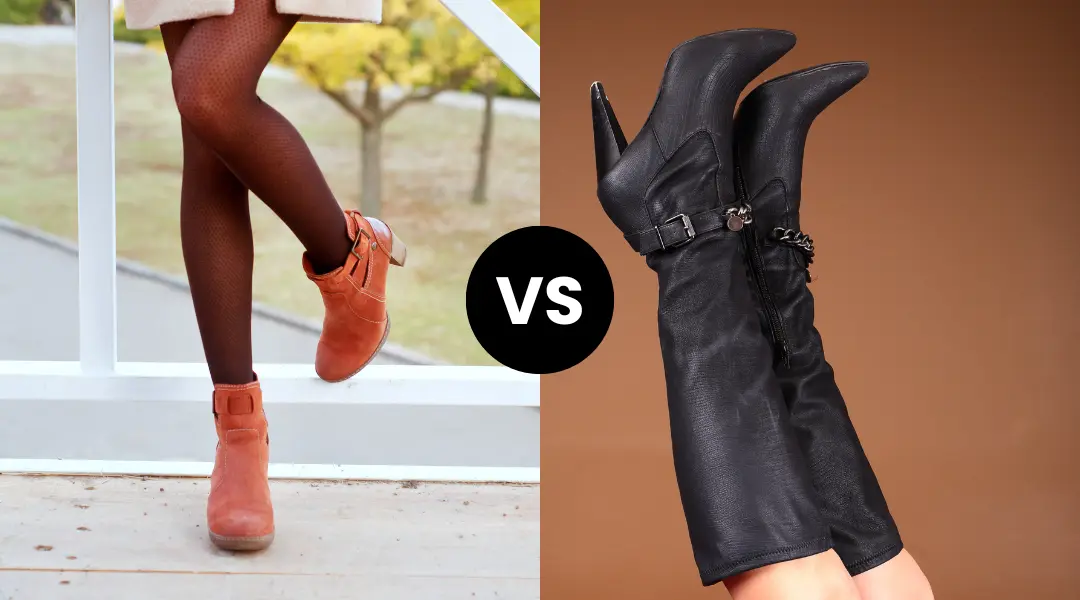Finding the perfect pair of boots is akin to discovering a treasure trove of outdoor adventures and everyday wear. Among the many options, the allure of the lightest boots has captured the attention of seasoned explorers and fashion-conscious individuals. But as the quest for comfort and performance intensifies, the perennial question arises: are tight or loose boots better? This comprehensive guide will delve into the fascinating world of lightweight boots and explore the factors to consider when deciding between snug and roomy footwear.
Lightest Boots Overview
In the pursuit of enhancing mobility and comfort, manufacturers have embraced cutting-edge materials and innovative designs, giving birth to the category of lightest boots. The shift from traditional, heavy leather constructions to modern synthetics and hybrid materials has revolutionized how we think about footwear.
- Advanced Materials: Lightweight boots owe their agility to materials like Gore-Tex, nylon, and carbon fiber. These elements reduce the overall weight and offer weatherproofing and durability, making them a go-to choice for hikers, runners, and adventurers.
- Minimalist Designs: Inspired by the minimalist movement, some lightest boot models boast streamlined designs that eliminate excess padding and support structures. This creates a feather-light sensation without compromising performance.
- Hybrid Innovation: Fusing traditional elements like leather with lightweight technologies has led to hybrid boots that deliver the best of both worlds. These boots combine the classic aesthetics of leather with the benefits of modern materials.
The Benefits of Lightest Boots
- Enhanced Agility: Whether tackling rugged trails or navigating busy urban streets, lightweight boots provide an unrivaled sense of agility. The reduced weight allows for faster movements and less fatigue during extended wear.
- Breathability: Lighter boots often feature enhanced breathability, vital for maintaining comfort during intense physical activities. Proper ventilation prevents moisture buildup and reduces the risk of blisters.
- Versatility: From hiking and trekking to everyday wear, the versatility of the lightest boots shines through. They seamlessly transition from outdoor escapades to casual outings, making them a practical choice for various occasions.
- Quick Drying: Many lightweight boot designs incorporate quick-drying technology, ensuring your feet stay comfortable even in damp conditions. This feature is handy for those who frequently venture into wet environments.
Tight vs Loose Boots: Finding the Perfect Fit
The debate over whether tight or loose boots are superior has persisted for years. Both options have their merits, and the ideal choice depends on the specific activity, foot type, and personal preferences.
Tight Boots:
- Enhanced Support: Snug-fitting boots provide more excellent ankle and arch support. This can be advantageous for activities that involve uneven terrain, as it reduces the risk of ankle injuries.
- Precise Control: Tight boots offer a higher level of control over movements. This is particularly important for rock climbing or technical hiking, where precise foot placements are crucial.
- Reduced Friction: A snug fit minimizes movement within the boot, reducing the chances of friction-related issues such as blisters.
Loose Boots:
- Breathability: Loose boots allow for better air circulation around the feet, reducing the likelihood of overheating and excessive sweating.
- Comfort: A roomier fit can be more comfortable during extended wear, especially for individuals with wider feet or those prone to swelling.
- Toe Wiggle Room: Extra space in the toe box prevents constriction and provides room for natural toe movement, enhancing overall comfort.
FAQs: Tight Boots vs Loose Boots
What are some common durability concerns associated with the lightest boots?
Lightweight boots often incorporate advanced materials for reduced weight and increased agility. However, some users may worry about their durability, especially in rugged environments. To address this, manufacturers focus on integrating durable fabrics and reinforcements without compromising weight. Look for boots with reinforced toe caps and abrasion-resistant materials to ensure longevity.
Are lightweight boots suitable for heavy-duty activities like backpacking with heavy loads?
While lightweight boots excel in agility and comfort, there might be better choices for weighty loads during intense backpacking trips. The reduced structure and padding could lead to discomfort and inadequate ankle support. Consider opting for midweight boots that balance support and weight for heavy-duty activities.
Can lightweight boots provide adequate protection in cold and wet conditions?
One concern with lightweight boots is their ability to provide sufficient protection against cold and wet weather. Many manufacturers incorporate waterproof and insulating technologies into their light boot designs to address this. Look for boots with waterproof membranes like Gore-Tex and additional insulation for warmth. Pairing them with appropriate socks can further enhance their performance in adverse weather.
How do I properly fit lightweight boots to prevent discomfort and blisters?
Achieving the right fit is crucial for preventing discomfort and blisters in footwear, including lightweight boots. Pay close attention to manufacturers’ sizing guides, and try on boots with the socks you intend to wear. Ensure your toes have enough wiggle room, and the shoes give a snug fit around the ankle to prevent excessive movement and friction.
Are lightweight boots suitable for technical terrain and challenging outdoor activities?
Lightweight boots can be an excellent choice for technical terrain and challenging outdoor activities, but it depends on the specific design and features of the boot. Look for boots with advanced traction patterns, durable outsoles, and enhanced ankle support. Remember that the decision between lightweight and heavier boots also depends on your skill level, the intensity of the activity, and your preferences for comfort and performance.
Conclusion
In the dynamic world of footwear, pursuing the lightest boots and the eternal tight vs. loose debate add complexity to the decision-making process. Whether you prioritize agility and support or lean towards comfort and breathability, the key is to strike a balance that aligns with your activities and preferences. As you embark on your next adventure or casual stroll, armed with the knowledge from this guide, you’re better equipped to step confidently into the world of boots that best suit you.

